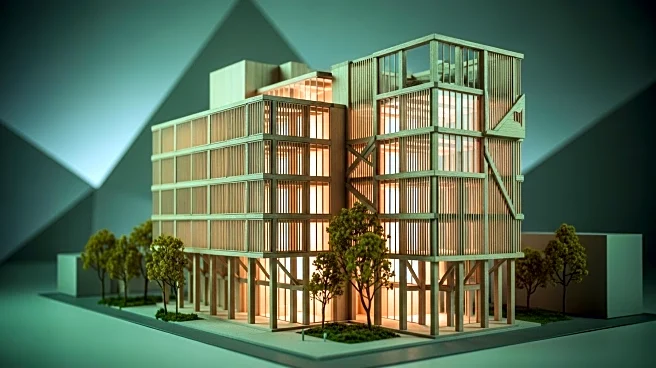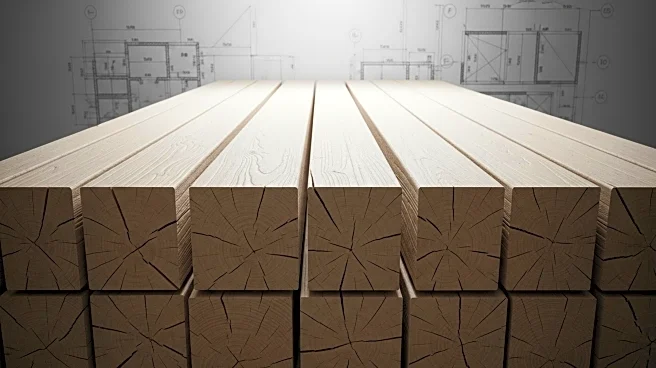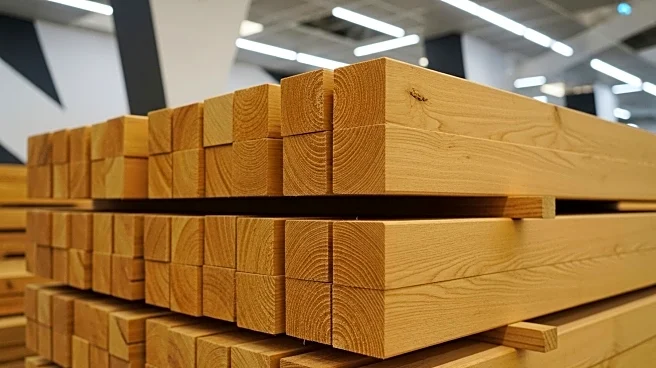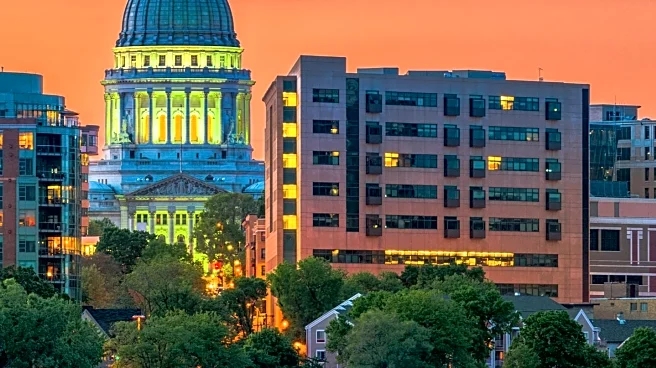What's Happening?
Mass timber, including cross-laminated timber (CLT) and glulam, is gaining traction as a sustainable alternative to concrete and steel in construction. Recent projects worldwide showcase the versatility and environmental benefits of mass timber, from skyscrapers to bridges and wind turbine towers. Notable examples include the Ascent tower in Milwaukee, the tallest mass timber building globally, and Norway's Mjøstårnet, which demonstrated the feasibility of tall timber structures. These projects highlight mass timber's potential to reduce carbon emissions and construction time while supporting local industries and communities.
Why It's Important?
The adoption of mass timber in construction is significant for its potential to reduce the carbon footprint of buildings. By replacing traditional materials like concrete and steel, mass timber can lock away carbon and decrease emissions associated with construction. This shift supports global efforts to combat climate change and promotes sustainable building practices. Additionally, mass timber projects often involve local forestry and manufacturing, boosting regional economies and creating jobs. As the construction industry seeks greener alternatives, mass timber offers a viable solution that aligns with environmental and economic goals.
What's Next?
The continued expansion of mass timber projects is likely to influence building codes and insurance frameworks, facilitating broader adoption. As more countries recognize the benefits of mass timber, regulatory adjustments may occur to support its use in high-rise and infrastructure projects. The success of current projects could inspire further innovation in timber construction, potentially leading to new designs and applications. Stakeholders, including architects, engineers, and policymakers, may collaborate to overcome barriers and promote mass timber as a mainstream building material.
Beyond the Headlines
Mass timber's rise in construction also poses questions about fire safety and long-term durability, which are being addressed through research and technological advancements. The material's ability to store carbon and its aesthetic appeal offer cultural and ethical dimensions, connecting modern architecture with traditional craftsmanship. As mass timber becomes more prevalent, it may redefine urban landscapes and influence architectural trends, emphasizing sustainability and natural materials.













